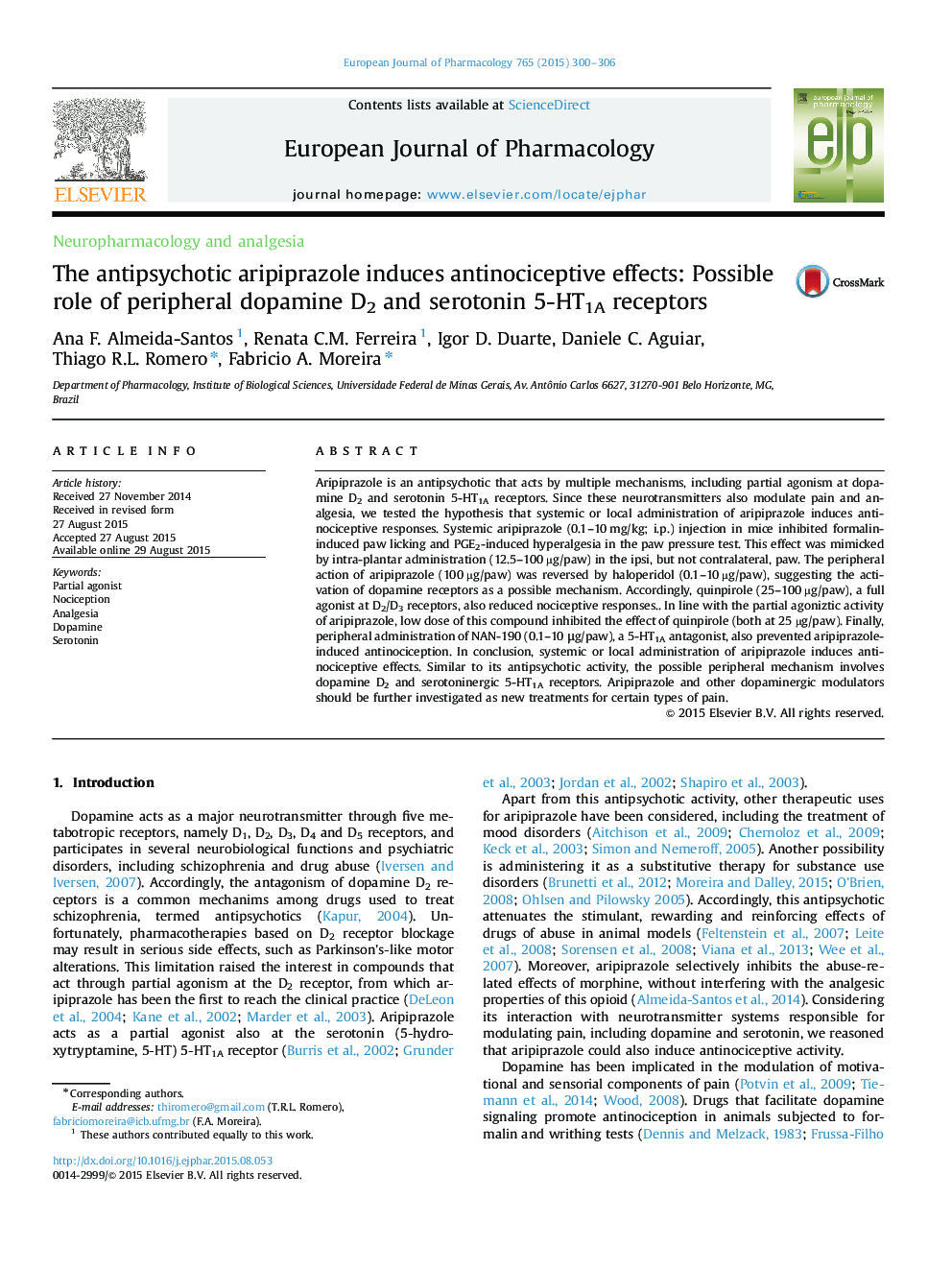| Article ID | Journal | Published Year | Pages | File Type |
|---|---|---|---|---|
| 5826897 | European Journal of Pharmacology | 2015 | 7 Pages |
Aripiprazole is an antipsychotic that acts by multiple mechanisms, including partial agonism at dopamine D2 and serotonin 5-HT1A receptors. Since these neurotransmitters also modulate pain and analgesia, we tested the hypothesis that systemic or local administration of aripiprazole induces antinociceptive responses. Systemic aripiprazole (0.1-10 mg/kg; i.p.) injection in mice inhibited formalin-induced paw licking and PGE2-induced hyperalgesia in the paw pressure test. This effect was mimicked by intra-plantar administration (12.5-100 µg/paw) in the ipsi, but not contralateral, paw. The peripheral action of aripiprazole (100 µg/paw) was reversed by haloperidol (0.1-10 µg/paw), suggesting the activation of dopamine receptors as a possible mechanism. Accordingly, quinpirole (25-100 µg/paw), a full agonist at D2/D3 receptors, also reduced nociceptive responses.. In line with the partial agoniztic activity of aripiprazole, low dose of this compound inhibited the effect of quinpirole (both at 25 µg/paw). Finally, peripheral administration of NAN-190 (0.1-10 μg/paw), a 5-HT1A antagonist, also prevented aripiprazole-induced antinociception. In conclusion, systemic or local administration of aripiprazole induces antinociceptive effects. Similar to its antipsychotic activity, the possible peripheral mechanism involves dopamine D2 and serotoninergic 5-HT1A receptors. Aripiprazole and other dopaminergic modulators should be further investigated as new treatments for certain types of pain.
